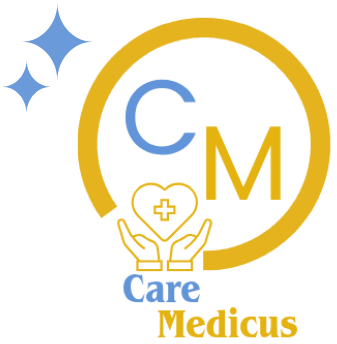Medical billing has always been complex, but today’s healthcare landscape makes it even more challenging. Constantly changing regulations, evolving fraud schemes, and heightened cybersecurity threats have forced healthcare organizations to treat billing system security as a top priority.
The stakes are high. Cyber incidents and compliance violations can expose sensitive data, disrupt operations, and damage patient trust. To stay protected, organizations must focus on three critical pillars—security, fraud prevention, and compliance. Whether billing is managed in-house or outsourced, understanding these priorities helps safeguard patients, revenue, and reputation.
Understanding the Current Threat Landscape
Healthcare organizations handle vast amounts of personal and financial data. Each patient record can be a valuable target for cybercriminals. A single breach may lead to identity theft, false insurance claims, and long-term loss of credibility. Regulators have tightened reporting timelines and security expectations, emphasizing the importance of quick detection and response when data is compromised. As a result, healthcare organizations now need more advanced systems for continuous monitoring and breach response. Internal risks are equally concerning. Fraudulent billing, code manipulation, and unauthorized data access by staff can cost organizations millions each year. Reducing both internal and external threats requires a strong foundation of security and accountability.
Building a Secure Medical Billing Foundation
Security measures are the first line of defense in any medical billing system. Without them, patient data and organizational integrity remain at risk.
Encryption and Secure Data Transmission: Every piece of data moving through a billing system must be protected through encryption. This includes information exchanged between billing software, clearinghouses, insurers, and third-party partners. Modern encryption technologies ensure data remains unreadable during transfer or while stored on servers. Encrypting both “in transit” and “at rest” information helps prevent exposure even if unauthorized access occurs.
Multi-Factor Authentication and Access Controls: Simple passwords are no longer enough to secure sensitive data. Multi-factor authentication (MFA) adds layers of verification, combining passwords with device-based or biometric checks. In addition, role-based access control (RBAC) ensures each employee can only view or modify the information relevant to their role. This “least privilege” approach limits exposure if an account is compromised.
Regular Security Audits and Penetration Testing: Security measures should be tested regularly to confirm their effectiveness. Scheduled penetration tests simulate real-world attacks, helping identify vulnerabilities before they can be exploited. Internal security audits—conducted quarterly or semi-annually—should review both technical systems and staff compliance. Maintaining an updated inventory of all devices and software that handle patient information is also critical to managing risks effectively.
Cloud Security and Vendor Management: Cloud-based billing solutions offer scalability and convenience but require careful oversight. Only work with vendors that maintain HIPAA-compliant systems and provide transparency about their data protection measures. A formal Business Associate Agreement (BAA) should outline how vendors handle patient data, define their responsibilities, and specify consequences for non-compliance. Clear expectations strengthen accountability and reduce third-party risks.
Fraud Prevention: Detection and Response Strategies
Billing fraud remains one of the most persistent challenges in healthcare. It can range from individual coding errors to sophisticated schemes involving multiple actors. Detecting and preventing fraud requires both technology and a strong ethical culture.
Recognizing Common Fraud Schemes
-
Upcoding: Billing for a higher level of service than was actually provided.
-
Phantom Billing: Charging for services or procedures that were never performed.
-
Unbundling: Separating procedures that should be billed together at a lower combined rate.
-
Double Billing: Submitting the same claim more than once, intentionally or accidentally.
-
Falsified Diagnoses: Misrepresenting a patient’s condition to justify unnecessary tests or treatments.
Leveraging Technology for Fraud Detection
Modern billing software now includes built-in fraud detection tools. Machine learning and data analytics can identify unusual billing trends, highlight inconsistencies, and compare claim patterns against peer benchmarks. These systems can automatically flag errors or irregularities before submission, reducing denials and preventing fraudulent claims from reaching payers.
Implementing Effective Audit Procedures
Auditing is one of the most powerful fraud prevention tools available.
-
Pre-payment audits catch issues before claims are submitted.
-
Post-payment audits identify recurring errors or potential misconduct.
Both approaches should focus on high-risk areas such as high-volume procedures or unusually high reimbursement codes. Internal and external audits together create a strong defense against both accidental and intentional fraud.
Creating a Culture of Compliance
Technology helps identify fraud, but organizational culture determines whether compliance truly thrives. Every team member—from front office staff to billing specialists—should understand how their actions impact compliance and security. Regular training keeps employees aware of evolving threats like phishing scams or social engineering tactics. Comprehensive annual compliance education should cover documentation standards, fraud awareness, and changes in regulations. Encouraging open communication is equally important. A clear, confidential reporting process allows staff to raise concerns about potential fraud or compliance issues without fear of retaliation.

Navigating the Complex Compliance Landscape
Medical billing compliance requires navigating overlapping federal, state, and payer-specific regulations. Keeping up with these rules demands consistent monitoring and ongoing education.
HIPAA Compliance: The Cornerstone of Patient Privacy
The Health Insurance Portability and Accountability Act (HIPAA) defines the standards for handling patient data. Its Privacy and Security Rules outline how patient information must be protected, both physically and electronically. Recent updates have emphasized stronger authentication, network segmentation, and detailed incident response planning. Non-compliance can result in substantial penalties, reputational damage, and in some cases, criminal liability.
Coding Standards and Updates
Accurate medical coding is essential to ensure proper reimbursement and compliance. The ICD-10-CM and CPT code sets are updated annually, and incorrect or outdated codes can result in denials or audits. Regular education for billing teams helps maintain accuracy and ensures codes reflect current regulations and payer requirements.
Medicare and Medicaid Requirements
Government programs often have unique rules that differ from private payers. Annual updates to reimbursement schedules, documentation requirements, and covered services demand careful attention. Providers should monitor official communications from CMS and state Medicaid agencies to stay aligned with policy changes and avoid penalties.
State Regulations and Payer-Specific Requirements
In addition to federal laws, states and private insurers maintain their own billing standards. Some prohibit balance billing or impose specific documentation requirements. Maintaining updated payer manuals and state regulations ensures claims are accurate and compliant with each payer’s unique expectations.
Best Practices for Maintaining Ongoing Compliance
Compliance is an ongoing effort, not a one-time project. Continuous improvement helps healthcare organizations stay ahead of evolving risks.
Documentation Standards
Accurate, detailed documentation supports every claim and demonstrates medical necessity. Each record should clearly show what service was provided, why it was needed, and how it benefited the patient. Proper documentation also ensures compliance with time-based codes and audit requirements. Organized recordkeeping systems make it easier to respond to payer or regulatory inquiries.
Regular Compliance Reviews
Routine internal audits help identify issues before they escalate. These reviews should evaluate:
-
Coding accuracy and documentation completeness
-
Correct modifier usage
-
Proper bundling and unbundling
-
Payer-specific compliance requirements
External audits by third-party experts add an extra layer of assurance, providing objective insight and identifying gaps internal teams might overlook.
Staying Current with Regulatory Changes
Regulatory updates are continuous. Healthcare organizations should establish systems to track and share relevant changes, such as subscribing to compliance newsletters, attending webinars, or joining industry associations. Monthly or quarterly compliance meetings help ensure the entire team remains aware of new developments and understands how to apply them.
Leveraging Compliance Technology
Modern compliance software automates many tasks—monitoring billing accuracy, tracking regulatory changes, and generating reports. These tools enhance oversight, reduce manual errors, and provide documentation trails for audits. Cloud-based platforms can centralize compliance efforts, but must themselves meet HIPAA standards to ensure security and privacy.

Taking Action: Your Next Steps
At Care Medicus, we believe that building a culture of compliance and security begins with awareness and accountability. The first step is to evaluate where your organization stands today—identifying strengths, uncovering vulnerabilities, and prioritizing the areas that pose the highest financial or legal risks.
Now is the time to act. Develop a structured corrective action plan that clearly defines responsibilities, sets measurable goals, and ensures progress is tracked at every level. Compliance is not the job of one department—it is a shared commitment. Leadership must model integrity, clinicians must document accurately, and billing teams must apply regulations consistently.
If internal capacity is limited, Care Medicus can provide the specialized expertise and technology needed to enhance compliance, protect your organization, and reduce risk. Together, we can strengthen your operational foundation and build a more secure, accountable, and trusted healthcare organization.






Leave a Reply